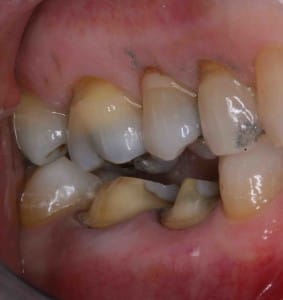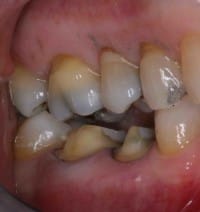 by Dr. Lee Ann Brady
by Dr. Lee Ann Brady
Occlusal reduction issues can strike when you least expect it.
One of the worst calls you can get from the lab when creating a restoration is that the provisional has been under-reduced and the result will be too thin.
There are two main challenges to a successful occlusal reduction and a satisfactory result from the lab:
- Ensuring that you have created adequate tooth reduction.
- Not taking away more tooth structure than is necessary.
To create the right amount of reduction, you need to have a goal of how much space should be created.
Porcelain Restorations and Occlusal Reduction
The benefits of adequate occlusal reduction are legion. Not only does it create predictability of the final restoration, but it does so both esthetically and structurally.
The evidence on success rates of all porcelain restorations in the posterior relative to occlusal reduction indicates one conclusion.
Inadequate reduction increases the risk of premature fracture and failure.
The solution? Preparing teeth to meet parameters that define the minimal thicknesses for success. This results from the inherent physical properties of the porcelain.
The Magic Number of Occlusal Reduction
2.0 mm of occlusal reduction is the magic number for creating an adequate amount of space.
These minimal thickness parameters apply to all of the occlusal surfaces, regardless of differences in fractures resistance that occur in different ceramic materials.
This number may appear high to some and bring up concerns about conservative preparation. From my experience, though, one of the more common questions I have received from courses on porcelain posterior restorations is how to prevent failure of occlusal reduction.
I always suggest that they can increase their success with this method. It is a predictable standard.
With this magic number of occlusal reduction in all of the load bearing areas, you can now help to ensure an exceptional restoration is delivered by the lab. Create the reduction, verify it, and then take the final impressions.
Read more from Dr. Lee Ann Brady on her approach to dealing with frustrating cases that present a significant challenge.



I think it’s magic number not only for occlusal surface but also for all preparation directions.
The decision whether you want to continue treatment conservative or not follow many factors like patient’s âge, oral heigin ,what kind of restoration you planned to do,etc..
But I think the most important of all is ( patient’s age) critical factor